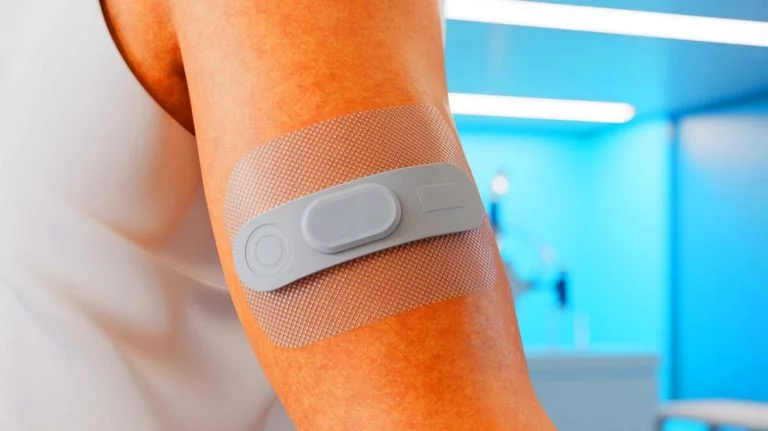| IN A NUTSHELL |
|
The world of healthcare is rapidly evolving, with wearable devices playing a pivotal role in how we monitor our health. These devices, from glucose monitors to heart rate trackers, offer real-time data that can be life-saving. However, a common issue with these devices is skin irritation caused by adhesives. Researchers at Texas A&M University have stepped up to address this problem, developing a new skin-safe adhesive that actually gains strength with sweat. This innovation promises to revolutionize the comfort and reliability of wearable medical devices.
When Sweat Helps Stick
The innovative adhesive developed by Texas A&M University is based on polyelectrolyte complexes, or PECs. These are sticky, water-based materials that adhere more gently to the skin compared to traditional solvent-based adhesives. Unlike commercial-grade adhesives that often lead to rashes, redness, and inflammation, the PEC formulation minimizes irritation. An intriguing property of this adhesive is its enhanced performance in the presence of moisture, including sweat.
Dr. Jaime Grunlan, a leading researcher at Texas A&M, highlights that no one has previously used PECs as adhesives for wearable medical devices. His team has patented a PEC that matches the adhesive strength of well-known brands like 3M Tegaderm, without the usual skin discomfort. This development could be a game-changer for devices like glucose monitors and heart rate trackers, which traditionally rely on hydrophobic, pressure-sensitive adhesives that can irritate sensitive skin over time.
Gentle Grip, Tough Hold
PEC adhesives offer a rash-free alternative with an impressive grip. Dr. Grunlan’s research indicates that the natural salt content in sweat can enhance the adhesive’s grip, making it particularly suitable for long-term wear. This characteristic defies the typical assumption that water-based adhesives lose stickiness with moisture. In this case, sweat actually boosts adhesion, making the PEC adhesive ideal for real-world conditions.
The development of this adhesive builds on Grunlan’s previous work with PEC coatings for flame-retardant materials. Recognizing the potential for PECs beyond industrial applications, his team is exploring their use in biomedical devices. The research is in its early stages, but there’s significant potential for applying PEC adhesives across a wide range of wearable devices, especially for patients with chronic conditions like diabetes and heart problems.
Collaborative Research and Support
This groundbreaking research is a collaborative effort involving various contributors, including former doctoral students and experts from Texas A&M’s Department of Biomechanical Engineering. The project received support from the Precise Advanced Technologies and Health Systems for Underserved Populations (PATHS-UP) Engineering Research Center and was funded through an Army Phase II SBIR grant.
The team has published their findings in the journal Macromolecular Rapid Communications, marking a significant milestone in the journey toward commercializing this adhesive. The interdisciplinary nature of the research underscores the importance of collaboration in pushing the boundaries of what’s possible in healthcare technology.
Potential Impact on Healthcare
As wearable devices become increasingly integrated into healthcare, the demand for skin-friendly adhesives will grow. The PEC adhesive developed by Texas A&M has the potential to improve the experience of millions of users by reducing skin irritation and enhancing device reliability. This innovation could lead to wider adoption of wearable devices, providing more people with access to real-time health monitoring.
The implications of this research extend beyond patient comfort. By improving the adhesion and user experience of wearable devices, healthcare providers can ensure more consistent and accurate health data collection, ultimately leading to better patient outcomes.
In conclusion, the development of a skin-safe adhesive that strengthens with sweat is a significant advancement in the field of wearable medical devices. As researchers continue to explore the applications of PECs, one can’t help but wonder: How will these innovations shape the future of personal health monitoring and patient care?
Did you like it? 4.6/5 (28)








Wow, this adhesive sounds revolutionary! Will it be available for consumer purchase soon? 🤔
I’m skeptical. How can sweat actually make an adhesive stronger?
Great work, Texas A&M! This could really help reduce skin irritation for many people.
Finally, an adhesive that works with my sweaty workouts! 😂
Thank you for addressing a real problem. Traditional adhesives are so irritating! 🙌
Is this product safe for all skin types? My skin is super sensitive.
Sounds too good to be true. What’s the catch?
Honestly, I’m just tired of my glucose monitor falling off. This could be a lifesaver!
How long does it actually last on the skin? I need something for all-day wear.